Coronary Blood Flow Is Increased in RV Hypertrophy, but the Shape of Normalized Waves Is Preserved Throughout the Arterial Tree
- PMID: 29904356
- PMCID: PMC5990630
- DOI: 10.3389/fphys.2018.00675
Coronary Blood Flow Is Increased in RV Hypertrophy, but the Shape of Normalized Waves Is Preserved Throughout the Arterial Tree
Abstract
A pulsatile hemodynamic analysis was carried out in the right coronary arterial (RCA) tree of control and RV hypertrophy (RVH) hearts. The shape of flow and wall shear stress (WSS) waves was hypothesized to be maintained throughout the RCA tree in RVH (i.e., similar patterns of normalized flow and WSS waves in vessels of various sizes). Consequently, we reconstructed the entire RCA tree down to the first capillary bifurcation of control and RVH hearts based on measured morphometric data. A Womersley-type model was used to compute the flow and WSS waves in the tree. The hemodynamic parameters obtained from experimental measurements were incorporated into the numerical model. Given an increased number of arterioles, the mean and amplitude of flow waves at the inlet of RCA tree in RVH was found to be two times larger than that in control, but no significant differences (p > 0.05) were found in precapillary arterioles. The increase of stiffness in RCA of RVH preserved the shape of normalized flow and WSS waves, but increased the PWV in coronary arteries and reduced the phase angle difference for the waves between the most proximal RCA and the most distal precapillary arteriole. The study is important for understanding pulsatile coronary blood flow in ventricular hypertrophy.
Keywords: Pulsatile wall shear stress; Womersley-type model; pulsatile flow; right coronary arterial tree; right ventricular hypertrophy.
Figures

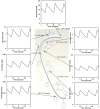
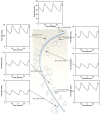
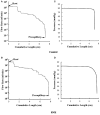
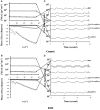

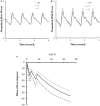
Similar articles
-
A hybrid one-dimensional/Womersley model of pulsatile blood flow in the entire coronary arterial tree.Am J Physiol Heart Circ Physiol. 2007 Jun;292(6):H2623-33. doi: 10.1152/ajpheart.00987.2006. Epub 2007 Jan 5. Am J Physiol Heart Circ Physiol. 2007. PMID: 17208998
-
Effects of cardiac motion on right coronary artery hemodynamics.Ann Biomed Eng. 2003 Apr;31(4):420-9. doi: 10.1114/1.1560631. Ann Biomed Eng. 2003. PMID: 12723683
-
Capillary perfusion and wall shear stress are restored in the coronary circulation of hypertrophic right ventricle.Circ Res. 2007 Feb 2;100(2):273-83. doi: 10.1161/01.RES.0000257777.83431.13. Epub 2007 Jan 11. Circ Res. 2007. PMID: 17218604
-
Regulation of coronary blood flow during exercise.Physiol Rev. 2008 Jul;88(3):1009-86. doi: 10.1152/physrev.00045.2006. Physiol Rev. 2008. PMID: 18626066 Review.
-
Large variations in absolute wall shear stress levels within one species and between species.Atherosclerosis. 2007 Dec;195(2):225-35. doi: 10.1016/j.atherosclerosis.2006.11.019. Epub 2006 Dec 12. Atherosclerosis. 2007. PMID: 17169362 Review.
References
-
- Butlin M., Qasem A., Battista F., Bozec E., McEniery C. M., Millet-Amaury E., et al. . (2013). Carotid-femoral pulse wave velocity assessment using novel cuff-based techniques: comparison with tonometric measurement. J Hypertens. 31, 2237–2243, discussion 2243. 10.1097/HJH.0b013e328363c789 - DOI - PubMed
Grants and funding
LinkOut - more resources
Full Text Sources
Other Literature Sources
Research Materials

